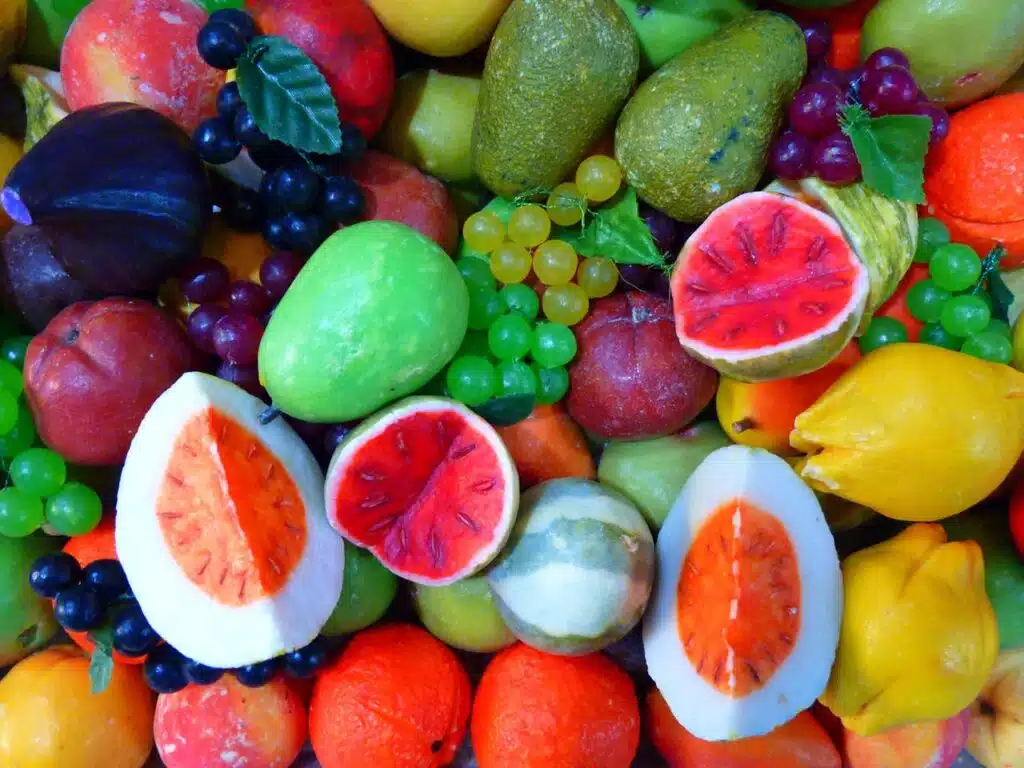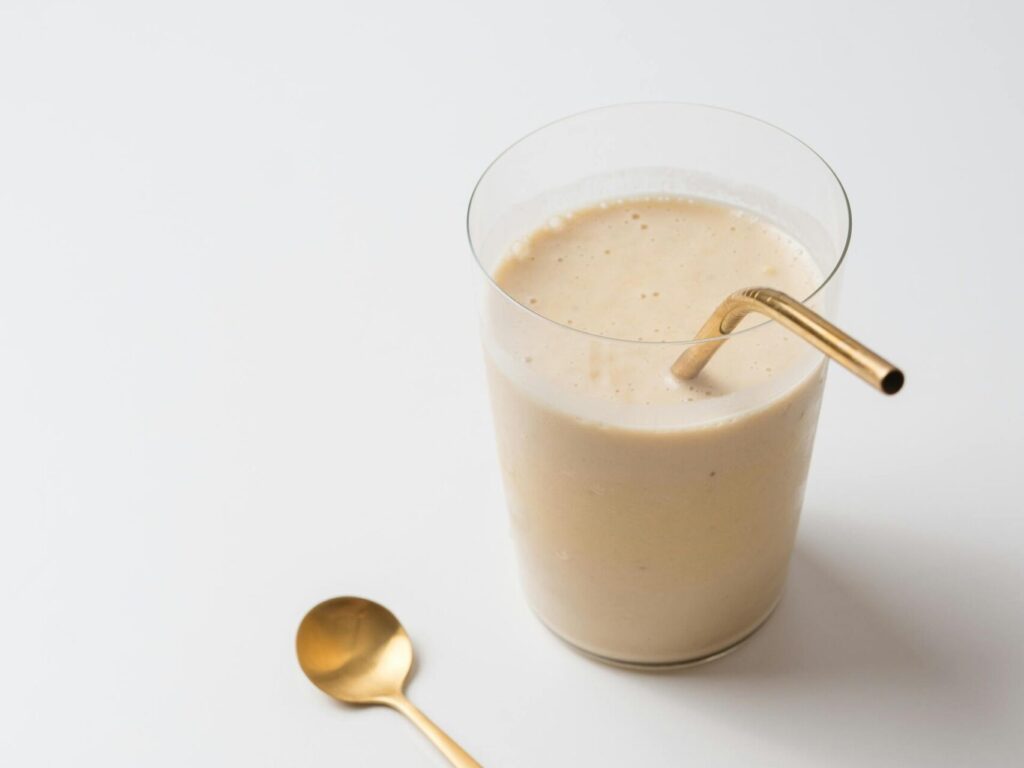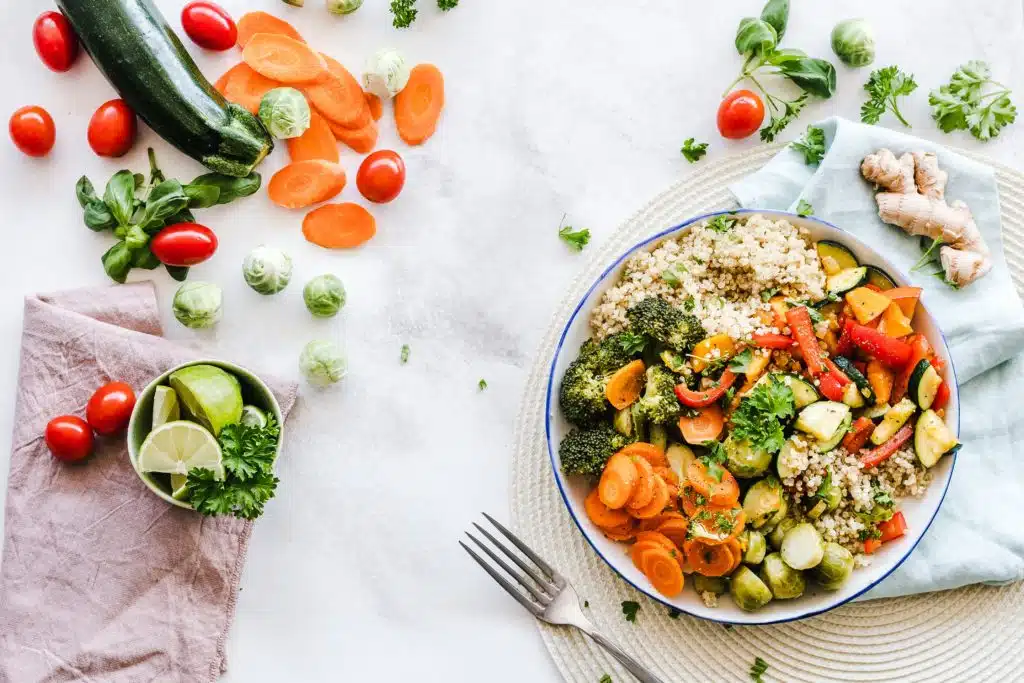Smoothies have long been more than just a brief dietary trend. They have become an integral part of a healthy lifestyle. Whether as a breakfast booster, a quick snack between meals or a refreshing summer drink, these creamy vitamin bombs are versatile, delicious and easy to prepare.
What makes a smoothie?
A smoothie is a pureed drink that usually consists of fruit, vegetables, liquid and optional superfoods or toppings. Unlike a classic juice, the whole fruit is processed here, including the fiber. This ensures longer satiety and is easy on the blood sugar level.
Green smoothies made with leafy vegetables are getting more and more popular. Spinach, kale or lamb’s lettuce provide iron, calcium and chlorophyll. Combined with sweet fruit such as banana or mango, the taste is pleasantly mild.
The benefits of smoothies: why the colorful power drinks are worth it
Smoothies are now more than just a trendy drink. Whether as a quick breakfast, a healthy snack between meals or a refreshing accompaniment in summer, the creamy blended drinks have found their place in a balanced diet. But what makes smoothies so valuable? Here are the most important benefits at a glance.
Nutrient-rich vitamin bombs
Smoothies combine a large portion of fruit and vegetables in one glass. As a result, they provide plenty of vitamins, minerals and phytochemicals. Green smoothies in particular score highly with leafy vegetables such as spinach or kale, which are rich in iron, potassium and antioxidants. A glass of smoothie can cover a large part of your daily vitamin and mineral requirements.
More fiber for better digestion
Unlike juices, the whole fruit is processed in a smoothie. This preserves fiber, which is important for healthy digestion and keeps you full for longer. Fiber also helps to keep blood sugar levels stable and prevent cravings.
Quick and easy to prepare
A smoothie is ready in just a few minutes. All you need is a blender, fresh fruit or vegetables and a liquid such as water, milk or plant-based drink. Especially in hectic everyday life, this is an uncomplicated way to incorporate a healthy diet without much effort.
Versatile and customizable
Smoothies are incredibly versatile. They can be sweet, fruity, creamy or even spicy – depending on which ingredients you combine. Superfoods such as chia seeds, ginger, oat flakes or nuts can also be used to enhance smoothies. This creates a new taste experience every time.
Hydration made easy
As smoothies consist largely of water, coconut water or milk alternatives, they also contribute to your daily fluid intake. They are a refreshing alternative to lemonade or soft drinks, especially on hot days.
Support for a healthy lifestyle
If you drink smoothies regularly, you automatically integrate more fruit and vegetables into your diet. This can help make it easier to implement the general dietary recommendations and promote long-term health.

Different types of smoothies
Smoothies have become an integral part of a healthy diet. They are colorful, full of vitamins and offer countless possible combinations. But not all smoothies are the same – depending on the ingredients and preparation, there are very different varieties that can meet different needs. Here is an overview of the most popular types of smoothies.
Fruit smoothies: the classic
Fruit smoothies are probably the best known and most popular varieties. They mainly consist of fresh or frozen fruit such as bananas, berries, apples, mangoes or oranges. A liquid is added, such as water, coconut water or a plant-based drink. They are perfect as a healthy snack and ideal for beginners.
Green smoothies: the nutritional miracle
In addition to fruit, green smoothies contain a portion of leafy vegetables such as spinach, kale, lamb’s lettuce or rocket. The taste can be softened with sweet fruit such as mango or banana.
Protein smoothies: For athletes and active people
In addition to fruit and vegetables, these smoothies also contain protein-rich ingredients such as yogurt, quark, protein powder, nuts or oat flakes. They provide plenty of energy and support muscle building.
Detox smoothies: light and refreshing
Detox smoothies are often prepared with ingredients such as cucumber, celery, lemon, ginger or parsley. They contain a lot of water, are low in calories and have a refreshing effect. These smoothies are particularly popular for small “reset phases” in everyday life.
Creamy smoothies: like a dessert in a glass
If you like it particularly creamy, use ingredients such as banana, avocado, nut butter or coconut milk. This creates smoothies that taste almost like a dessert but are also rich in nutrients. They are a healthy alternative to sweets.

The modular principle: smoothies made easy
Smoothies are probably the easiest way to incorporate more fruit and vegetables into your daily routine. But anyone who blends regularly knows the problem: you quickly end up using the same ingredients over and over again, and at some point it gets boring. This is exactly where the modular principle helps. With a few simple categories, smoothies can be put together again and again according to your mood and stock levels, without a recipe book, but guaranteed to be tasty and healthy.
Why a modular system?
The modular principle saves time and makes you flexible. Instead of sticking strictly to one recipe, you choose ingredients from different groups and combine them as you wish. This creates variety in a glass and you can adapt smoothies perfectly to your own needs. Whether you want an energy-boosting start to the day, a light and refreshing snack or a protein-rich drink after sport.
The base
The base provides the liquid and determines the consistency. This can consist of water, coconut water, milk or plant-based drinks (e.g. oat, almond or soy milk). Creamy versions with natural yoghurt or kefir are also possible.
The fruit
Fruit brings sweetness, vitamins and color to the glass.
- Banana (makes creamy and sweet)
- Berries (antioxidants, fruity freshness)
- Mango or pineapple (exotic and juicy)
- Apple or pear (mild and high in fiber)
The vegetables
Vegetables provide additional nutrients and make the smoothie balanced. Spinach, kale or lamb’s lettuce, for example, are good neutral additions. Cucumber or celery provide a fresh kick, carrots provide valuable beta-carotene and beet provides sweetness and an intense color. In principle, however, there are no limits and you can experiment with different combinations.
The extras
Extras turn the smoothie into an individual power drink. Oat flakes or chia seeds provide better satiety. Nuts or nut butter provide healthy fats and protein powder or quark are popular with sports enthusiasts. Special and unique flavors can also be achieved by adding spices such as ginger, cinnamon or mint.
The Topping (optional)
If you serve your smoothie in a bowl, you can enhance it with toppings. As we all know, you eat with your eyes aswell and in just a few simple steps, a simple smoothie becomes an eye-catcher. Possible toppings are, for example:
- Nuts, seeds or granola
- Fresh fruit
- Grated coconut or cocoa nibs
Conclusion: smoothies are healthy, versatile and uncomplicated
Smoothies have long been an integral part of a healthy diet. They combine vitamins, fiber and taste in one glass and can be easily adapted to individual needs. Whether fruity, green, protein-rich or creamy, the variety is huge, and the modular principle guarantees that there is never a dull moment. Every smoothie becomes a delicious companion for more energy and well-being in everyday life.
Try it out straight away and mix your own smoothie using the modular principle. Healthy, quick and exactly to your taste!

How Healthy Are Meal Replacement Drinks?
The new trend of “liquid meals” promises quick, convenient, and nutrient-rich nutrition. But how healthy are meal replacement drinks? Learn more about their pros and cons, their role in weight loss, and whether they could be a viable option for you.
The basics of metabolism
The word metabolism comes up again and again, often when describing health phenomena and especially often when it comes to losing weight. Yet many people don’t even know what exactly metabolism is or mistakenly equate it with digestion. In this article, we will explain to you what metabolism really means.
10 rules for a healthy diet
Whether for physical and mental performance, to prevent certain diseases, or for a long and vital life, a fundamental building block is a healthy and balanced diet. But what exactly does that mean? We will explain it to you and give you 10 rules for a healthy diet.





